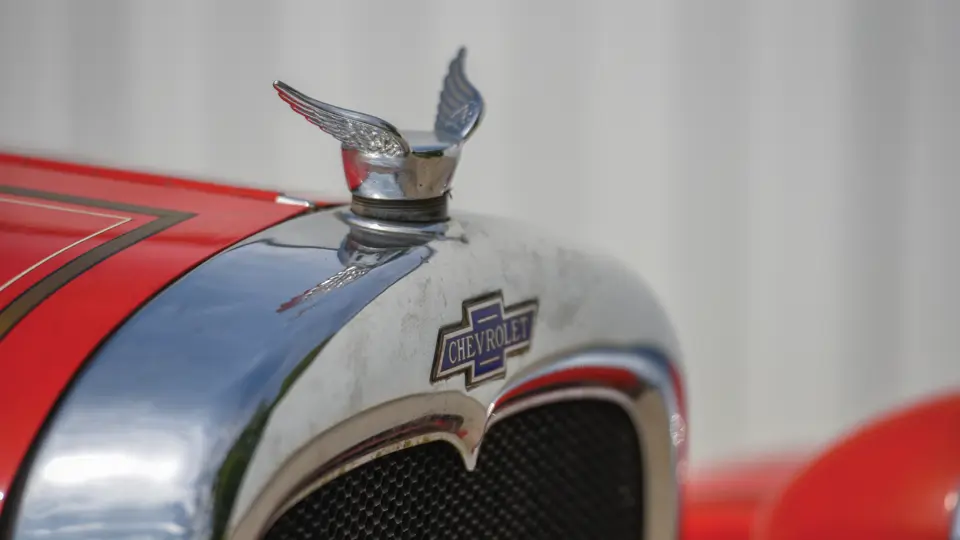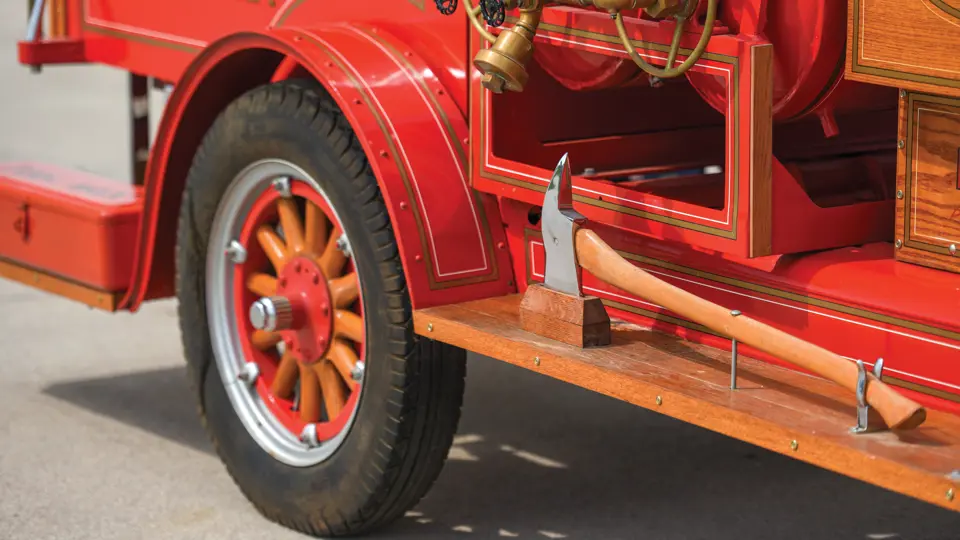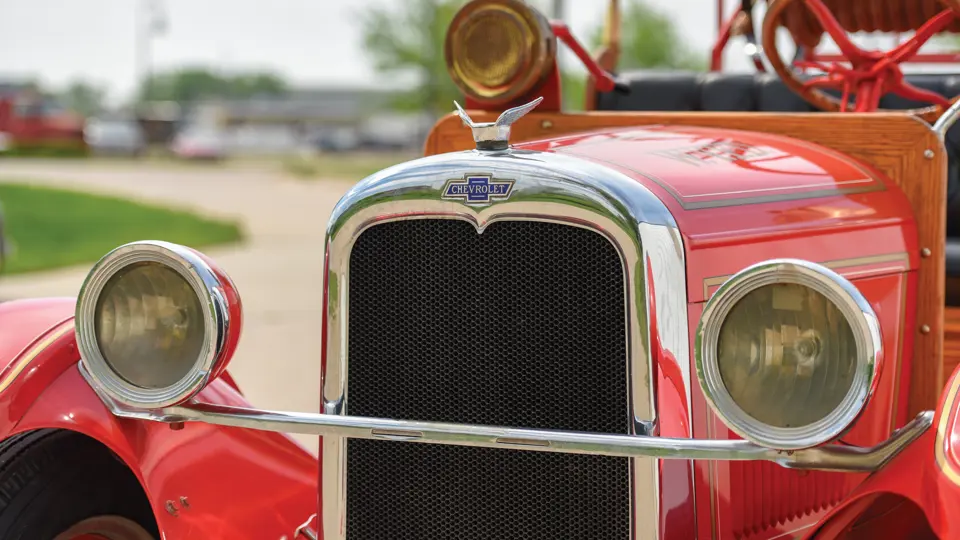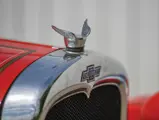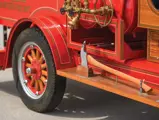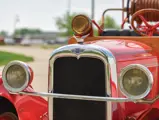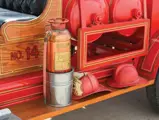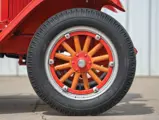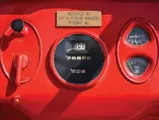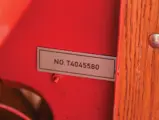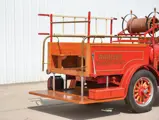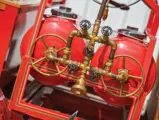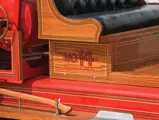Today virtually all fire apparatus is built by professional specialty companies, whether for use in metropolitan cities or rural volunteer fire brigades. Increasingly, equipment is built to a general specification, and it is sometimes possible to buy vehicles “off the lot.” Not so long ago, there were many small regional firms building to order, usually on mass-produced truck chassis. Sometimes tiny fire districts would assemble their own apparatus by fitting pumps, ladders, hose, and other firefighting equipment to available truck chassis.
The precise origins of this 1926 Chevrolet-based fire engine are not known. A small plaque proudly announces it was “restored by Art & Sharon Wahlers of Phoenix, AZ.” The sides are lettered for the “Wahlers Volunteer Fire Department.” Built on the chassis of a one-ton Chevrolet truck, it is a chemical engine, in which the extinguishing fluid is produced by the chemical reaction of soda and acid, as opposed to pumping water from a hydrant, pond, or onboard tank. Other equipment includes a hose reel with hose, axe, ladder, and a small fire extinguisher. Warning signals are generated by a brass bell and a hand-crank siren. As seen, the vehicle is suitable for parade or museum display.
The engine is Chevy’s overhead-valve inline four of the period, driving through a three-speed transmission to a heavy-duty rear axle. Brakes operate on the rear wheels only. Perfect for an eclectic collection, it could serve as a parade vehicle for a local fire department.

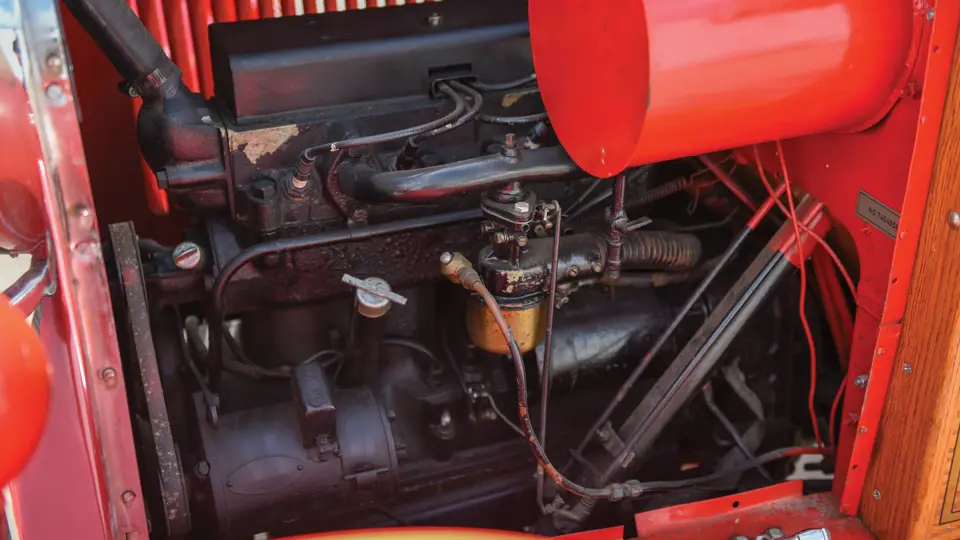
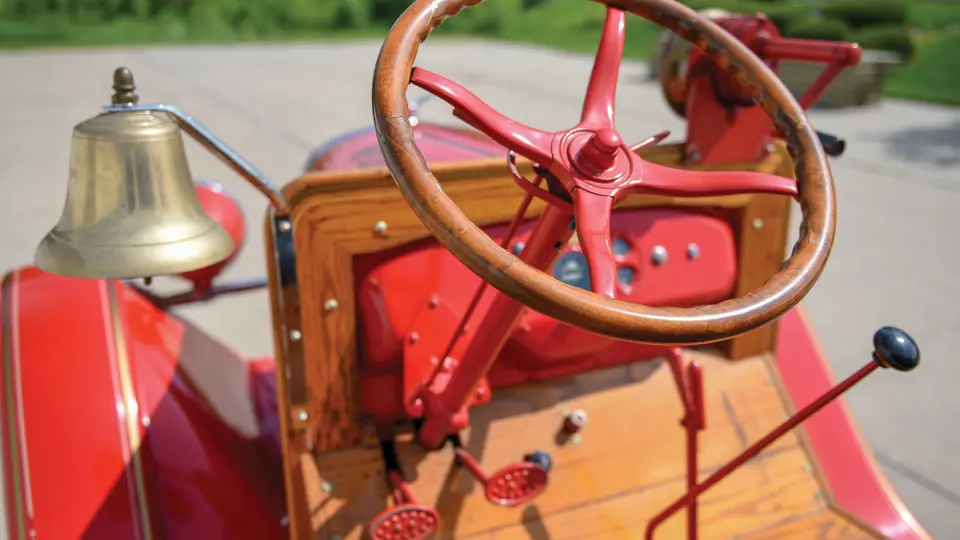

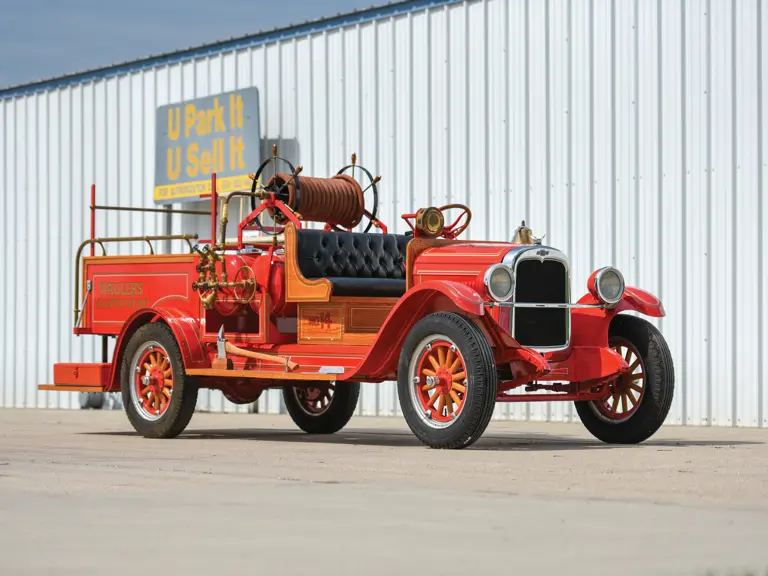
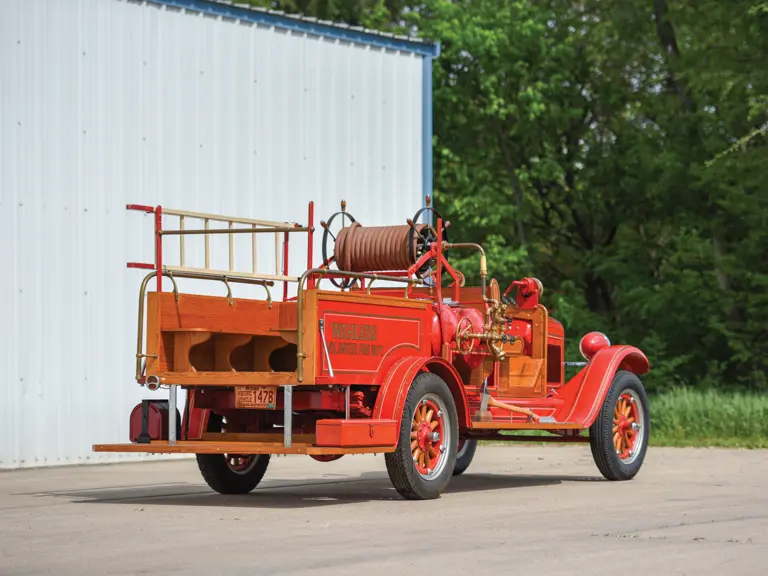
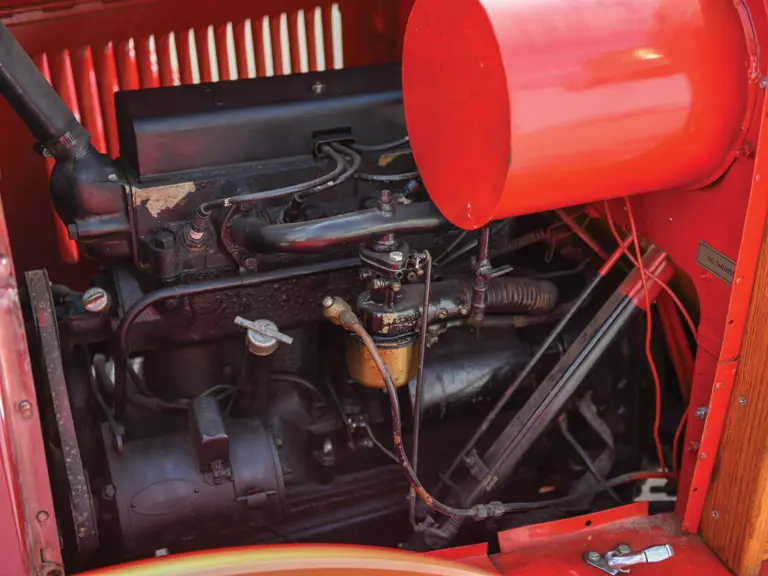
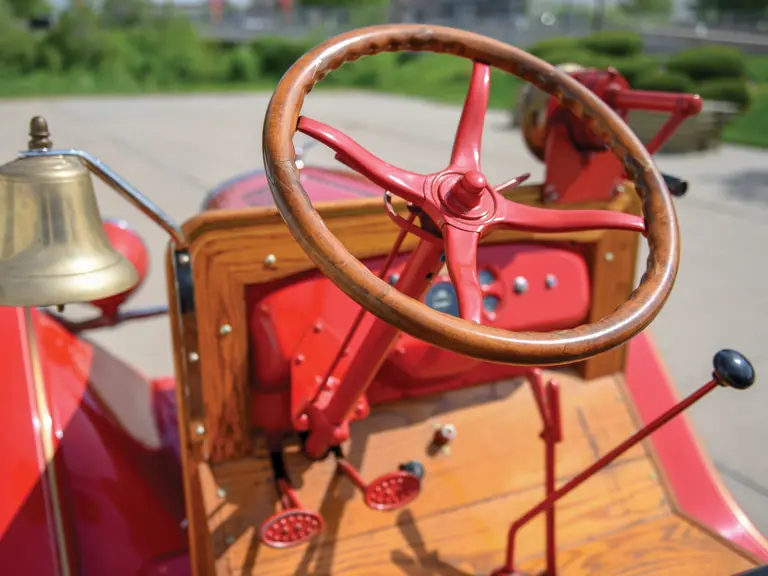
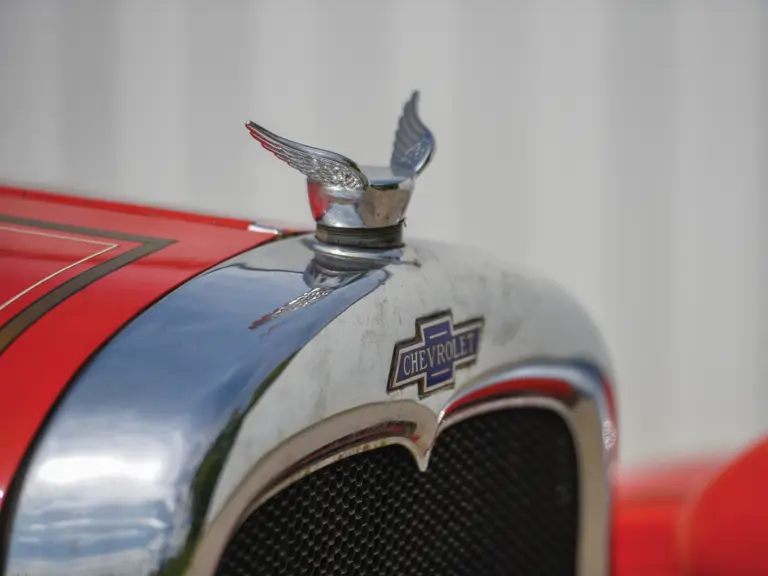
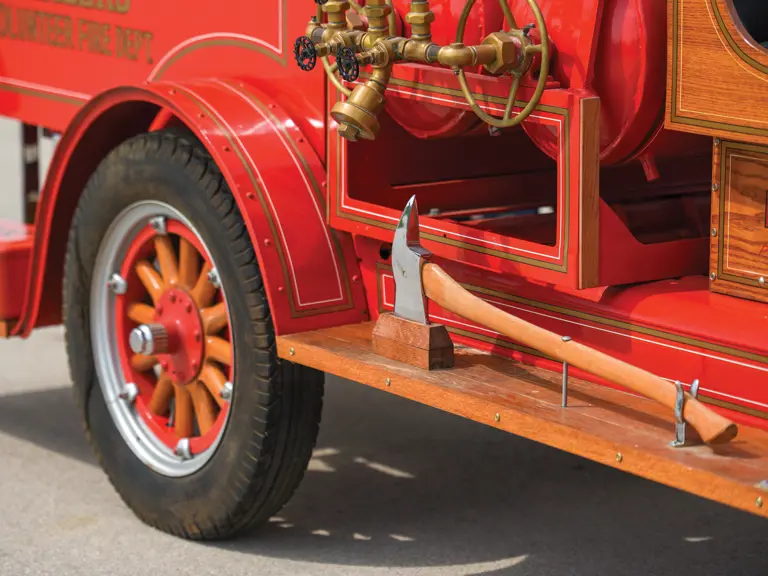
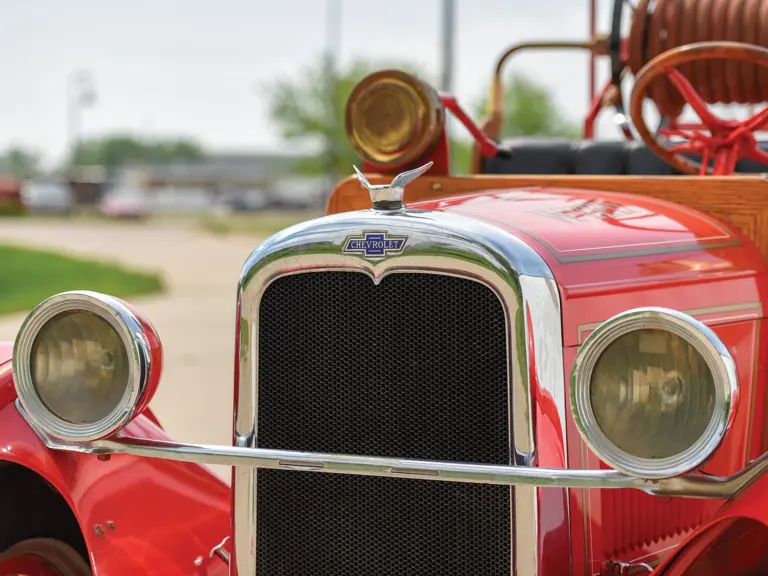
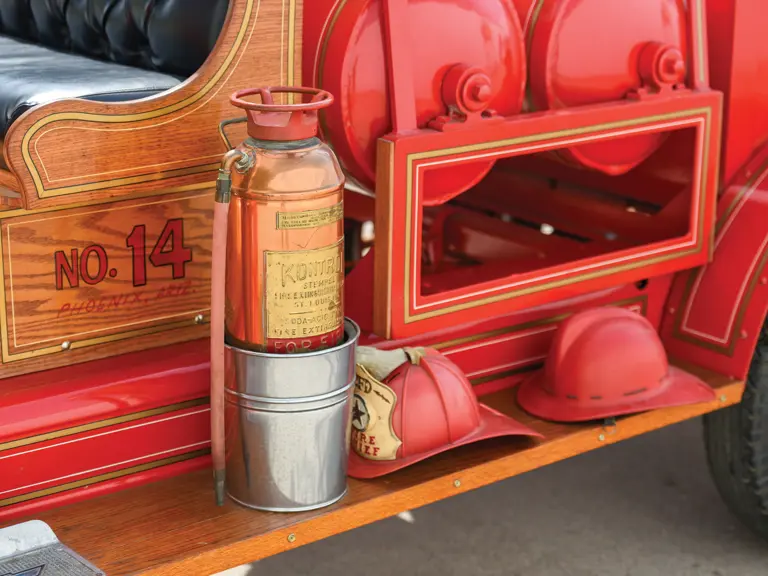

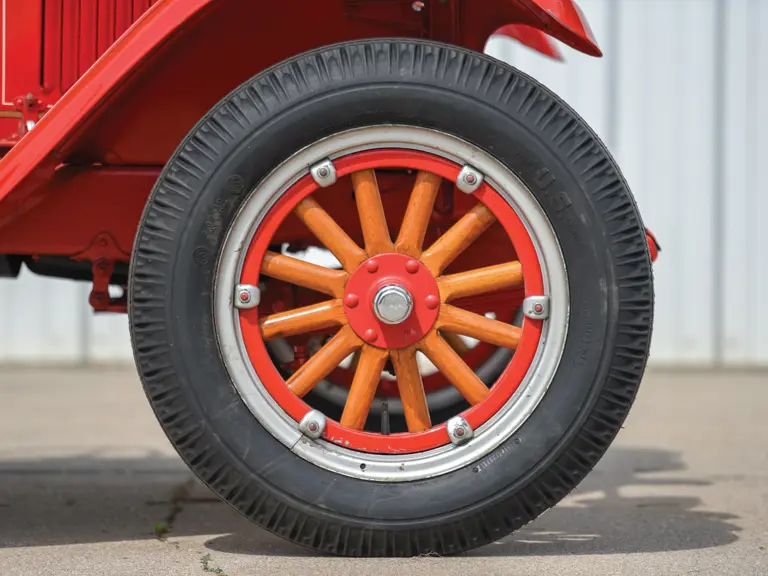

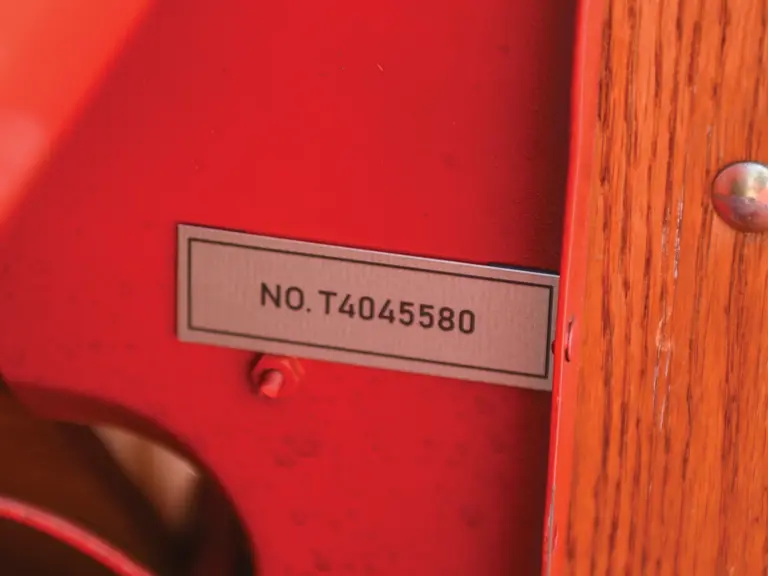
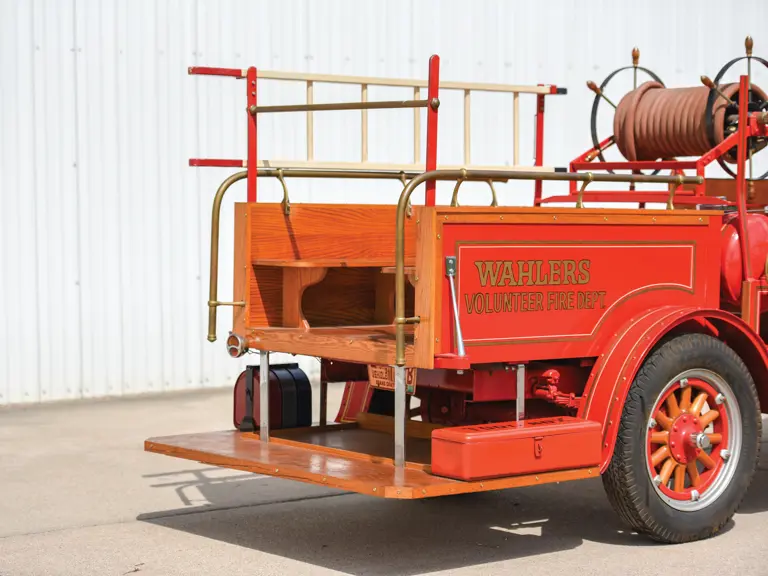

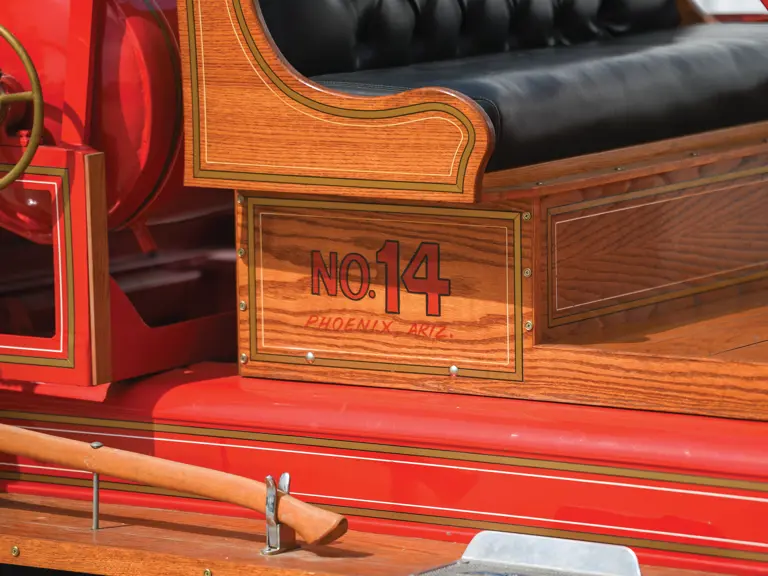
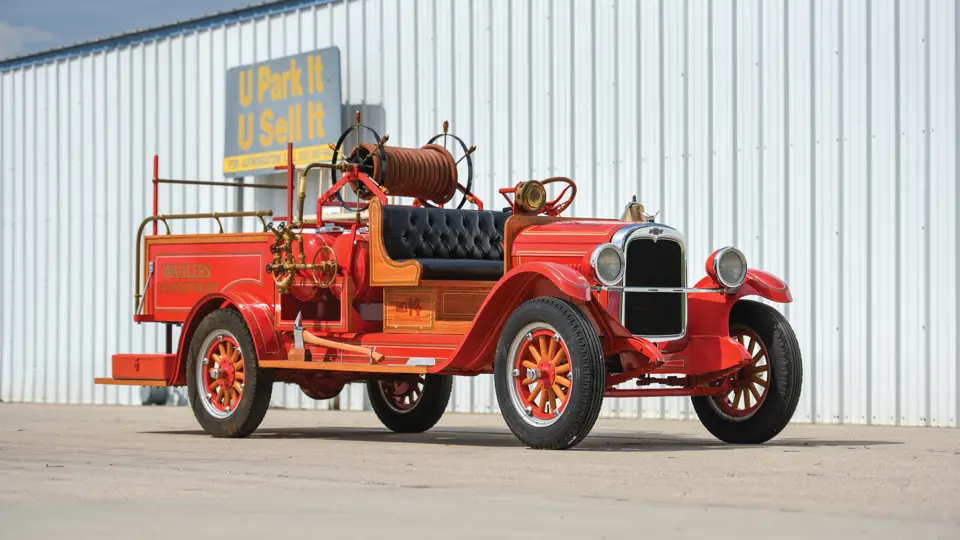
 | Hershey, Pennsylvania
| Hershey, Pennsylvania
